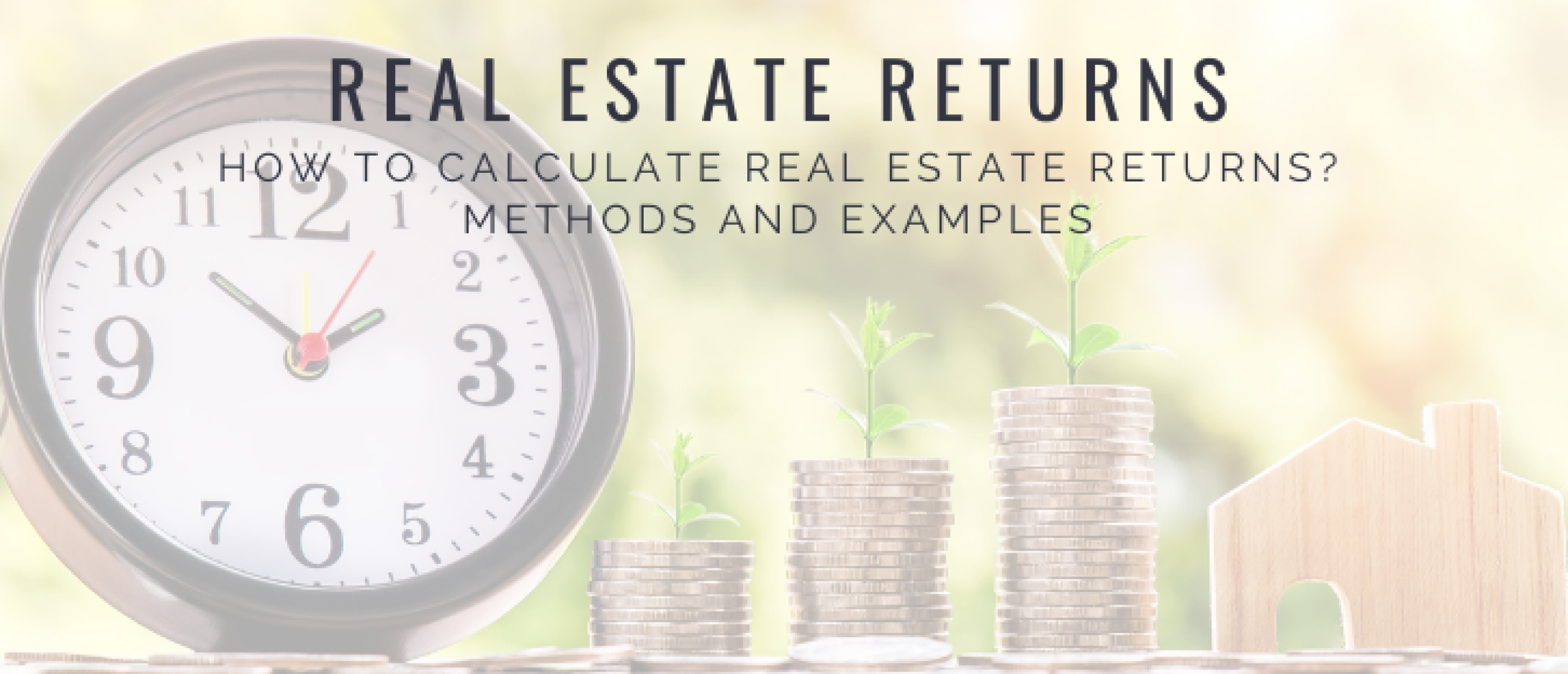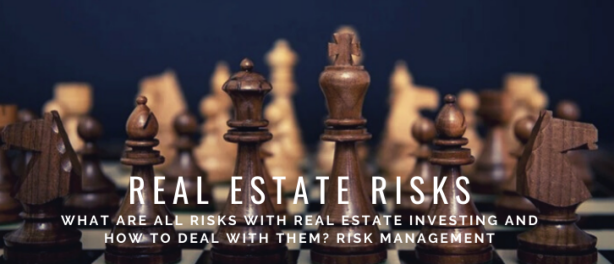Dear Happy Investor, are you considering investing in real estate? If so, you need to understand the basic concepts of calculating real estate returns. Yield is simply a measure of how much money you make on a potential investment. The return on real estate can vary greatly depending on the type of property you are purchasing.
In this article, we'll look at examples related to how return on real estate works. We also look at how we calculate return on real estate ourselves. Finally, we discuss different ways to increase the total return on our investment.
Read on for tips and investment calculations that will make you an intelligent real estate investor.
On to sustainable financial success!
Contents
Return on Investment (ROI) with real estate

When it comes to real estate investment, there are many things to consider. The first step is understanding your return on investment, or ROI.
Every real estate investor wants to have a positive return on their investments. Real estate can yield high returns, but it is hard for investors to determine whether the property they are looking at will be a good investment.
There are many factors involved in a successful acquisition. Calculating the returns from your property will show you what kind of ROI you will see on your investment. They will also give you a better idea of what to expect when the project is finished.
What is a good return on real estate?
In normal cases, the desired gross yield is 8% as a minimum. Real estate investors usually calculate with 3% annual capital gains, with an average of 2% annual inflation. In total the desired return is approx.. 9 – 11% per year. In the long term this can increase if debt is decreasing.
Of course, the return is entirely dependent on your choices, which we will tell you more about below.
First, another insight: in addition to real estate, you can also achieve returns on other assets. ETF investing can lead to an average 8 - 10% return per year. Investing in stocks can lead to more or less. And in addition, there are crypto currencies. Take this into account within your investment decisions. You can only allocate capital once 😉 .
Calculating Real Estate Returns: cash flow and capital gains

The real estate industry is at its highest point. That’s the reason why there are ample opportunities for investors to invest in real estate. For those beginning their career as an investor, there are multiple types of rental properties you can invest in, such as single-family homes, apartments, buildings, complexes, duplexes, and townhouses. If you are not already familiar with this, read more about how to start with real estate investing.
It is also essential to determine the budget and the investment strategy as the journey of real estate investors starts. This would also help in calculating the Return on Investment correctly.
The main thing that affects real estate investments is how much income your property can generate. Real estate investors are generally focused on two things: cash flow and capital gains.
Cash flow is the amount of money you get in rental income each month, minus your expenses. Capital gains are the amount of money you make when you sell your property at a higher price than what you bought it for.
Of course, real estate assets can also provide capital appreciation over time. Your goal can be to generate enough income through rentals so that both aspects of real estate returns (capital gain and cash flow) are strong enough to make a good return on your investment.
Calculating Real Estate Cash Flow
There are several factors involved in cash flow from real estate investments. The rental income from the property minus operational costs, such as insurance and taxes, is your monthly return. If you want a successful investment, the total rent amount should be higher than the total expenses. In most cases, it is recommended that you get a return of at least 8-10% from your investment.
To figure out how much income you can make from a property, use this formula:
Net Operating Income/Cap Rate = Expected Monthly Cash Flow
To calculate net operating income, add up the expected monthly rents of a property. Then, subtract any estimated expenses from that number.
The cap rate is the constant rate for similar properties in the area you are investing in.
If the property is not comparable to existing ones, use a lower cap rate when determining your cash flow. Many online calculators and apps are available to help you with this calculation. But, during calculations, do keep all real estate risks in mind.
How to Calculate Returns on Real Estate Investment?

Before moving over to calculate returns on real estate, there are a few essential pieces of information you will need to calculate the returns on real estate:
- Property Details: The most common property details are the property's value, repairing costs, number of bedrooms, and square footage.
- Mortgage Details: The details include loan terms, interest rates, closing cost
- Rental Expenses: You are required to be aware of the monthly maintenance, utilities, repairs, dues, and property management costs.
- Annual Returns: This includes the property taxes and yearly insurance cost related to the property
Here is an overview of how to help calculate returns on Real Estate.
1. Capitalization (Cap) Rate
The capitalization rate is the net income of the percentage of its market value. To calculate the Cap rate, the property's purchase price is considered as the market value. Especially if the property was purchased a few years ago
Examples Real Estate Returns:
Here is an example that would give an overview of how the Capitalization Rate works. Let's assume that we spend $ 100,000 to own a rental property that generates approx. $ 10,000 in rental income annually.
After paying off the property's operating expenses, such as taxes repairs. The property's net income is $6,000, and dividing this amount by the cost of the property gives you a cap rate of 6%. The cap rate has various benefits. It can be a great way to compare rental properties as they may have distinct financing structures.
2. Cash on Cash Return
The most efficient way to determine the return on investment is to calculate the cash-on-cash return. If you have various properties to choose from with different prices and layouts, this can be the best measurement to determine which property will get the best return.
Examples Real Estate Returns:
- A single apartment is for $ 100,000, the lender of the property requires a 20% down payment on it, and including closing costs, the property will cost around $ 25,000 to acquire. The property would rent out for $ 1,000 per month, and after deducting mortgage payment, and other expenses, the net income would be approximately $ 200.
- A multi-family apartment is for $ 150,000. The lender requires a 25% down payment, and after including the closing cost, the property would be around $ 40,000 to acquire. The expected rent would be about $ 1500 per month, and the monthly expenses are estimated to be $ 1200. So, the net income per month of the property would be $ 300 per month
The first property produces $ 2400 cash flow per year. Based on the $ 25,000 initial cost, it translates that this property has a 9.6% cash-on-cash return. On the other hand, the second property produces a cash flow of $ 3600 per annum, considering the $ 40,000 to acquire it. Therefore, the cash-on-cash return of the second property would be 7%. So, the first property is expected to generate more income.
3. Total Return and Internal Rate of Return
The total return is considered as the appreciation of equity and income. For example: if you pay $ 100,000 to acquire a property, it produces a net income of $ 6000 per annum and increases in value by $ 5000. The total return would be 11%. The total return is a long-term metric that helps evaluate the invested property's performance after you sell it.
Examples Real Estate Returns:
Suppose you buy a $ 100,000 rental property on the mortgage and pay $ 25,000 to acquire it. After four-five years, you intend to sell the property. In the entire holding period, the property produced a rental income of $ 15,000, and you managed to sell it for $ 120,000.
The total return over the holding period is $ 35,000, which translates to become 140% total return based on $ 25,000 investments.
Internal Rate of Return has a similar nature to annualized total returns. It is often used in real estate investing, and the methods to calculate IRR are beyond this blog post's scope.
These were some of the methods for calculating return on real estate. It is wise to combine and compare several methods. The goal is to compare different properties with each other. The properties with the highest return are also the best investment. Also take into account other factors, such as location, condition of the house, et cetera.
Questions or comments? Ask them in a comment below.




![Learning Real Estate Investing: Free Explanation Beginners [2022].](https://media-01.imu.nl/storage/thehappyinvestors.com/4861/responsive/6230915/learn-real-estate-investing-2560x1100_614_264.png)


![How to Start With Real Estate Investing? [2022] Beginners Guide](https://media-01.imu.nl/storage/thehappyinvestors.com/4861/responsive/5859640/how-to-start-with-real-estate-investing-2560x1100_614_264.png)
